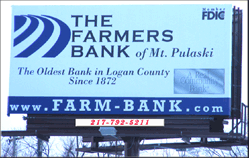|
 In March, a third of the 96 bolts failed, and transportation officials said it could take months to find the cause and fix the problem, meaning the scheduled Labor Day opening of the new $6.3 billion span could be in jeopardy. In March, a third of the 96 bolts failed, and transportation officials said it could take months to find the cause and fix the problem, meaning the scheduled Labor Day opening of the new $6.3 billion span could be in jeopardy.
Hundreds of pages of documents released to news media by the California Department of Transportation show its inspectors found structural integrity issues with some of the bolts several years ago, before they were installed.
The documents were unclear about whether issues flagged by Caltrans' own inspectors in 2007 and 2008 were remedied before the bolts were delivered and installed. The inspectors noted that the bolts failed elongation tests for structural integrity and said they were concerned about the quality of work by a company that galvanized the bolts to prevent corrosion.
Inspectors said bolts made by Painesville, Ohio-based Dyson Corp. had failed to meet certain standards during testing on three occasions.

Andrew Gordon, a Caltrans spokesman, said the agency would not comment during an ongoing investigation into why the bolts failed. Dyson Corp. also has said it will not comment during the probe into the bolt failures.
The bridge's main contractor, American Bridge Fluor, an Oakland-based joint venture, did not return a call seeking comment.
Metallurgists said the documents contained no clear explanation about why the bolts cracked, but they suggested the cause was likely a confluence of missteps during manufacture and installation.
Among the most likely problems Caltrans and experts have highlighted:
-
Galvanizing such large bolts, 17 to 24 feet long, could increase the probability of internal micro-cracks, which wouldn't necessarily be caught by standard construction industry testing.
-
Mistakes in heat-treating, which was repeated due to inadequate paperwork, could have introduced micro-cracks near threads of the bolts.
-
Hydrogen, which is known to make steel brittle and subject to breaking, could have infected the steel during manufacturing and been sealed into the bolts by the zinc coating applied during galvanizing.
-
The bolts may have been accidentally tightened beyond the maximum allowable amount, causing them to snap.
"This is most likely a perfect storm situation," said David Xu, a mechanical engineer and metallurgist at Berkeley Engineering and Research Inc. "A lot of these factors alone might not have caused this issue, but together most likely could have pushed it over the edge."
The threaded bolt and nut assemblies connect the bridge deck to columns and run through a giant shock absorber called a shear key. It's a massive concrete and steel structure that helps control sway during an earthquake.

The problem bolts were made in a batch in 2008. Another batch from 2010 has been installed and Caltrans has reported no failures in those bolts.
In October 2008, Caltrans admonished Dyson after finding that a test sample of bolts did not meet elongation requirements, a measure of the bolts' structural integrity.
"Noncompliance elongation is not something I would let pass," Xu said, noting the testing showed one bolt was nearly 2 percent under the required amount.
"That's a pretty big deal," he said
While three sampled bolts were just under the required numbers, Caltrans noted that it was the third such instance with Dyson since 2007. The agency did not provide statistics on earlier instances.
[to top of second column] |
 Documents show Dyson's fix was to request that Caltrans accept the noncompliant bolt tests "as is." The documents did not include a reply from Caltrans to the request.
"What boggles my mind is that this was the third time this happened with Dyson, and we don't have records for two previous failed tests," Xu said. "What happened to those?"
The records show Caltrans inspectors also identified other issues with Dyson and its subcontractors.
Cleveland-based Art Galvanizing Works Inc., which put the protective zinc coating on some of the shorter bolts, was criticized by inspectors for using approximate time guidelines for bathing the bolts, which Xu said can affect the integrity of the galvanizing. Other companies were used to galvanize longer bolts.
"The procedure appears to function purely by 'seat of the pants' judgment by galvanizing operators," wrote Venkatesh Iyer, a Caltrans structural materials specialist who inspected the site.
The inspector also found that Art Galvanizing comingled some rods with adequate coating thickness with insufficiently coated rods.
"Art Galvanizing Works does not have necessary quality control," Iyer said in the report.
Adrian Klein, the company's owner, said she had been told by Dyson not to comment while the investigation was open.

The documents also show that in September 2008, another galvanizing company that plated the larger bolts was told by American Bridge Fluor to ship them before quality assurance testing was complete. It was unclear from the records if the quality assurance inspection was done before installation.
Robert Ritchie, a metallurgist at Lawrence Berkeley National Laboratory, said he thinks a mixture of events contributed to the failure of the bolts. If galvanizing was not done properly, he said, some corrosion could have entered the bolts. And problems in double heat treatment could have created a higher strength steel than required, which would create more brittleness.
Ritchie said the construction industry is not required to conduct fracture mechanics tests on the bolt threads -- an area that is thinner and more at risk of failure than the rest of the bolt.
The failed elongation tests that Caltrans highlighted in its documents would not have detected cracks within the threaded area, he said.
Ritchie said that if a tougher standard of testing fracture mechanics were required, any fracturing within the bolts would have been discovered before installation.
Now, with many of the failed bolts located beneath a concrete cap, they cannot be easily replaced, making a fix more time-consuming and expensive.
[Associated
Press; By JASON DEAREN]
Follow Jason Dearen on
Twitter:
http://twitter.com/JHDearen.
Copyright 2013 The Associated
Press. All rights reserved. This material may not be published,
broadcast, rewritten or redistributed.
 |